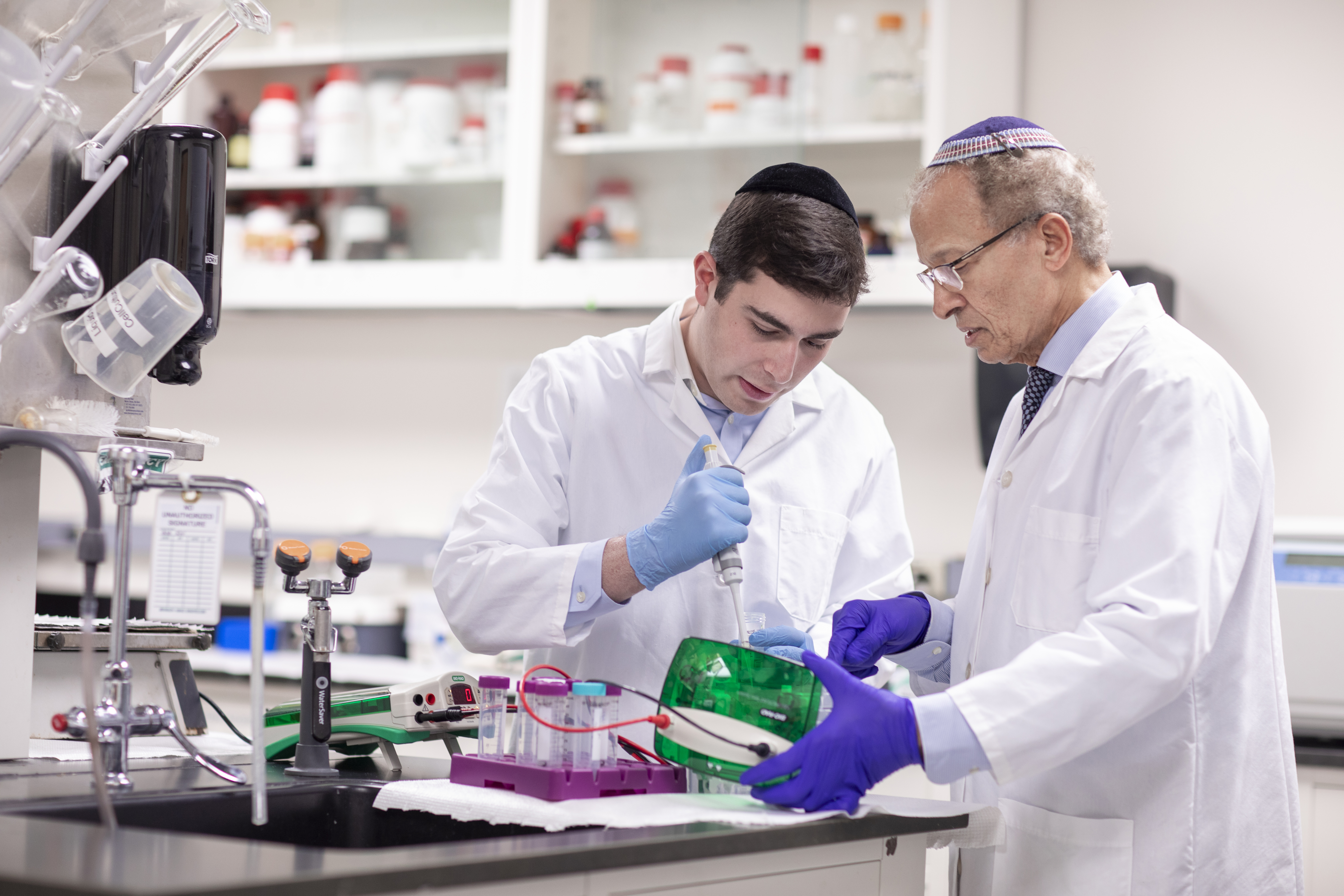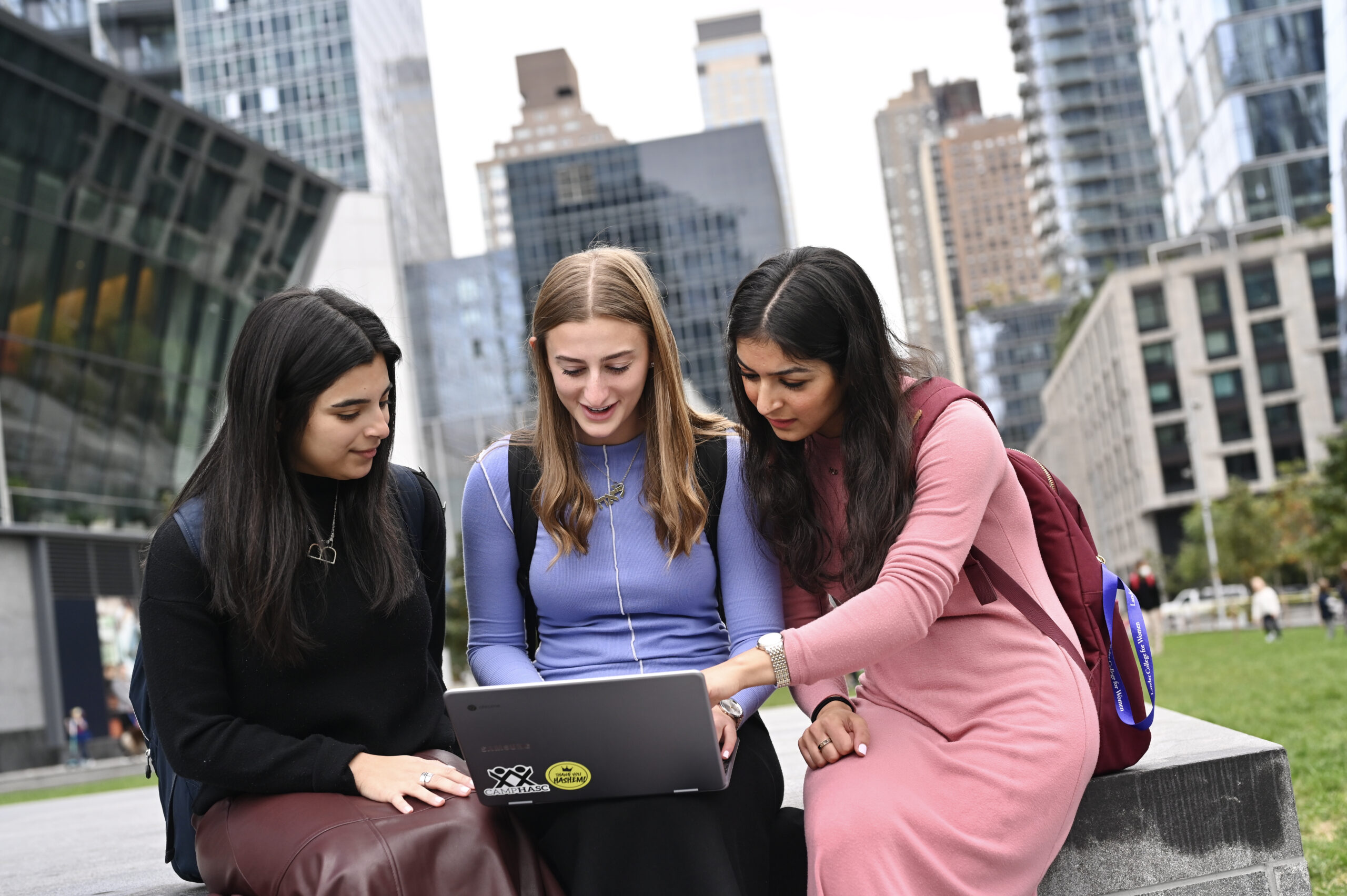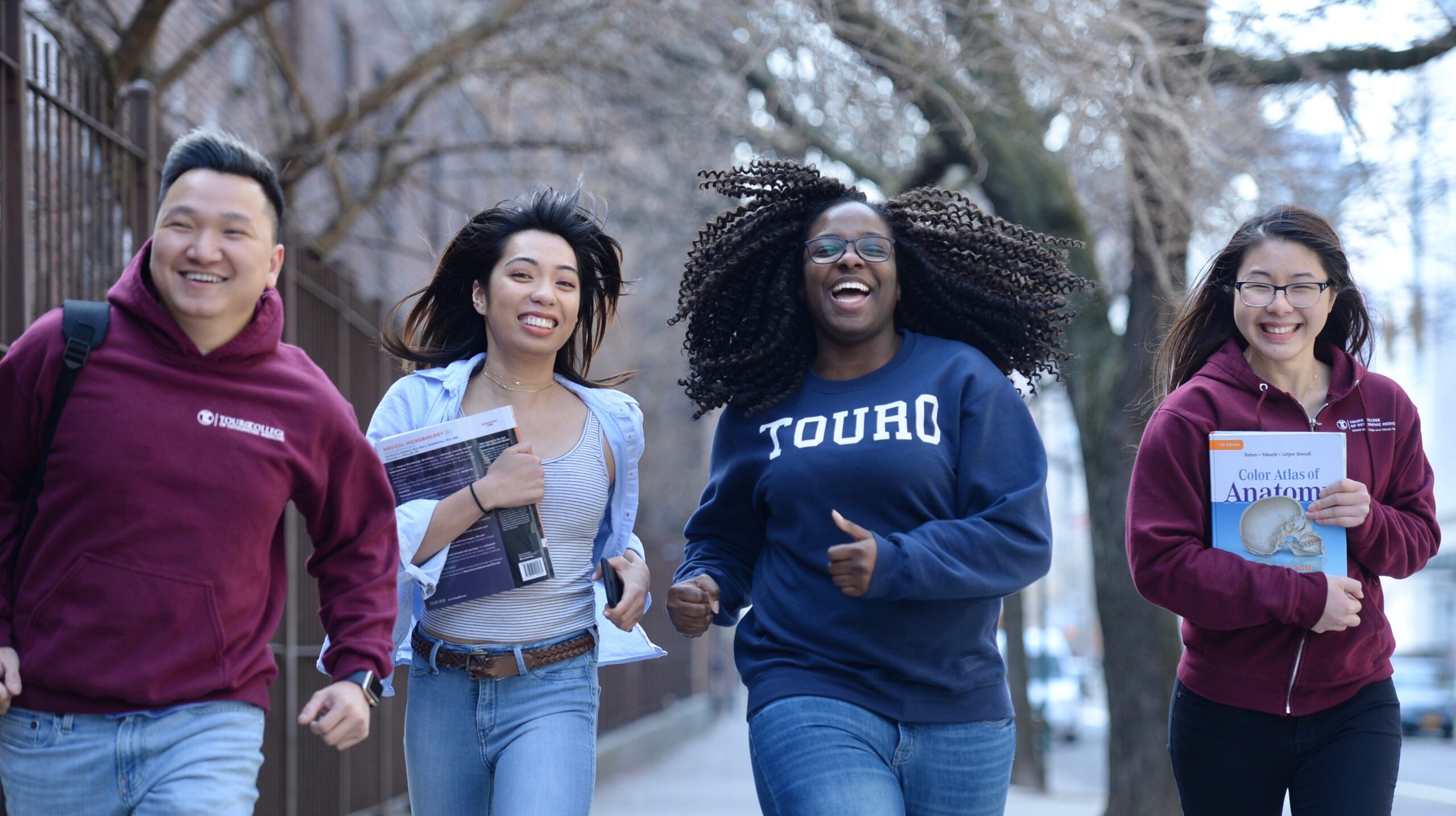President Dr. Alan Kadish called it serendipitous. How else can it be explained that Touro University, searching for years for a prime spot to create a central campus in a tight New York City real estate market, landed 300,000 square feet of space in Times Square during a pandemic? Call it good timing or good fortune, either way this innovative institution is going places, and its next stop is Midtown Manhattan.
The gleaming spot at 3 Times Square is opening in stages – officially a day or so after the Big Ball drops on New Year’s Eve – as part of a strategy that will grow this institution, not in number of students but in quality and value. With a lease that runs for 31 years, there is plenty of time to shape that master plan. Having just attained its university status, its dual mission of preserving the Jewish heritage and closing gaps in education achievement is gaining steam.
“We’re very excited about what’s happened to Touro,” Kadish says. “We’ve made major progress in getting the word out about what was an always excellent institution, but about the new things we’re doing. We’ve expanded in dramatic ways in health science education, both in the disciplines and in the geographic locations. We’re always going to be primarily a teaching institution, but we’ve developed significant areas of expertise and research, particularly in the last couple of years. Although we’re not a faith-based institution, we continue to develop one of our core missions, which is to serve the Jewish community.”
One of the most intriguing institutions in the world, Touro is almost indefinable. It is New York- based but truly global, with campuses in the U.S. including Nevada and California, as well as locations in Israel, Germany and Russia. It serves an elite group of students in its New York Medical College and yet welcomes nearly all comers to one of its undergraduate schools, NY School of Career and Applied Studies, that is designed to serve students from diverse academic and socioeconomic backgrounds. Steeped in Jewish tradition, the majority of its attendees are not members of the faith. Comfortable with the number of students it has, it is nonetheless looking for more opportunities. As playwright and Columbia grad Katori Hall noted, “serendipity always rewards the prepared.” While stretching its reach, Touro clearly has a defined plan, and it is working.
Still, Kadish admits Touro isn’t immune from the challenges facing higher education, including retention of undergrads. Touro also has had to navigate stringent COVID measures in Germany and the tenuous political climate in Russia. However, it has managed to balance that with shining developments including 3 Times Square and recent moves such as the acquisition of Lovelace Institute for Biomedical Research in New Mexico.
To learn more about this unique institution, which will have its 50th anniversary celebration in December, University Business sat down for a conversation with Kadish, who has been leading Touro since 2011:
Can you share your university’s mission and who you serve? What makes Touro unique?
There are three things that make us unique. One is that we’re geographically and academically diverse. We’re in 10 cities now. We have some schools where the admission rate is under 5% and others where admission criteria is not very selective. The second thing is that we’re not for profit, but we’re willing to try new things when we think that makes sense. We’ve been, in some of our schools, a little bit on the cutting edge –experiential learning in law school, flipped classrooms in medical schools, digital dentistry in our new dental school. We’ve also been doing online education since the 1990s. The third thing is the mission piece [with inclusion at its core]. The Jewish heritage piece is promulgated in three ways: in the undergraduate schools and divisions that are primarily designed to serve the Jewish community; in graduate programs and Jewish Studies, which are small, but we think impactful; and in teaching our students that part of our responsibility as members of humanity is to serve others.

Aside from 3 Times Square, what are some of the most interesting developments happening at Touro?
The biggest is that the Lovelace Biomedical Research Institute joined the Touro system in July. We’ve already seen some joint collaborative research projects that have begun and we’re continuing to enhance scientific collaborations. We’ve been talking about adding a PsyD program, and now that we have received approval by the state, it is beginning this fall. Our plan is to open a new osteopathic medical campus in Great Falls, Montana, in July of 2023. We opened a new [physician’s assistant] program in Middletown, NY, a few months ago and opening one in Chicago this January. We have some significant expansion plans in the dental school, which has been a huge success. From Day 1, we integrated digital dentistry using advanced technology. That includes using scanning, rather than impressions to make crowns, having multiple imaging techniques available at the chair when students are seeing patients, and continuing to look at ways to create single-visit procedures. We will continue the process of integrating teaching and research collaboration among the different units of Touro, something we started two years ago to try to create synergies.
How was the Times Square site identified and how is it positioning Touro for the future?
We own a lot of our facilities. Unfortunately, the one place we don’t own facilities is Midtown Manhattan. We’ve been looking to find a place where we can have more of a campus feel, have students be able to work together and talk to each other, have the operational efficiencies of being in one place, to be able to share classrooms. Serendipitously, COVID changed the atmosphere, and Cushman and Wakefield found an opportunity. The ability to get over 300,000 feet in a single location, with a separate entrance to accommodate students and reasonable sized ceilings, it wasn’t easy to find. During COVID when there was less demand on space, we were able to do that and plan to open our new Touro Cross River Campus in December
You mentioned your numerous locations. How have developments been going abroad, especially the tense climate in Russia?
The campus in Israel has been doing fine. That program is not huge, but it’s been doing very well. The program in Germany has been challenged a little bit by the pandemic. A significant percentage were international students who went away during COVID. We’re recovering enrollment there now. We have two campuses in Moscow, one that we run independently, one that we run in collaboration with a Russian university. The one that we run independently has been experiencing terrible difficulty lately since the current geopolitical climate is such that, Russians don’t want to go to an American school now. We’re going to make to make some changes. We’ve been there for 35 years so it’s kind of sad, but we can’t fight it.
What have been some of the keys to your success in a tough time for higher education?
One has been making sure we have the appropriate input and involvement by everybody, but minimizing bureaucracy. [During the early stages of COVID], we came up with the idea that we should create a framework for strategic planning and collaboration. We called it the 30-30-30 initiative. We got 30 people together for 30 days to come up with a plan for 2030. Most people would say that’s insane. It takes two years to do that. The problem is, we didn’t have two years. We decided it was better to come up with a plan that was 80% than to take two years to get to a plan that was 90% and would be obsolete by the time we finished. It ended up taking 45 days.
Joint governance and input from everyone is good and necessary, but you have to do it in a way that doesn’t self-define you. Another example is our first call about the medical school in Montana, which was in December of 2020. We hope to get final approval to open in July of 2023. That’s an astoundingly short period of time to get something like that up and running. But we’re able to do it because it’s something we know how to do and because people are used to coming together, providing the right input. We have great people devoted to the mission.
As you look ahead toward 2030, what are the most critical issues facing higher education?
As societies become fractious and politicized, we have to make sure higher ed does the right thing within that environment. It’s a huge challenge. Encouraging dialogue and free expression, as long as it doesn’t impinge on hate speech and allows for different points of view, should be where higher ed is. Obviously, we don’t dictate what our faculty and staff do, but as an institution that’s where we try to go. A second big challenge is regulation and the lack of realization that regulation carries costs with it, even if it’s good and well intentioned. A lot of the increased regulation that higher ed has faced has been for good reasons – to encourage diversity and make sure that everyone is treated fairly, which we support strongly. But there’s also stress about the price of higher education [with higher ed receiving virtually no money to administer student loan funding, for example]. The third is demographics. Mergers, relationships, acquisitions, closings have been related to those demographic changes. We’re not immune. In the general undergraduate environment, it has been a challenge.
More from UB: The President Series
- Minerva: A look at the world’s most innovative university
- Florida Gulf Coast: From Dunk City to world impact, the rise of FGCU
- Holy Cross: Tradition reigns, but change has been positive
- University of Oklahoma: A flagship university that is changing lives on campus
- Western New England:Â What is a new traditional university and why is the vision so vital?
- Midland: Small university continues to be ‘relentlessly relevant
- Purdue: Growth tied to keeping students at center of bulls-eye
- Muhlenberg:Â Leading the way as pioneers for women
- Stetson:Â Why kindness has been one of the keys to Stetson’s success
- Waubonsee CC: Remaining relevant requires deep focus on students, employees
- Dominican: Providing support for first-gen students
- Rockland CC: Is this a time of opportunity for community colleges?
- University of Montana:Â How higher ed can work for veterans
- Quinnipiac: Creating partnerships and lifelong learning








